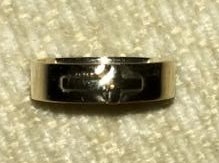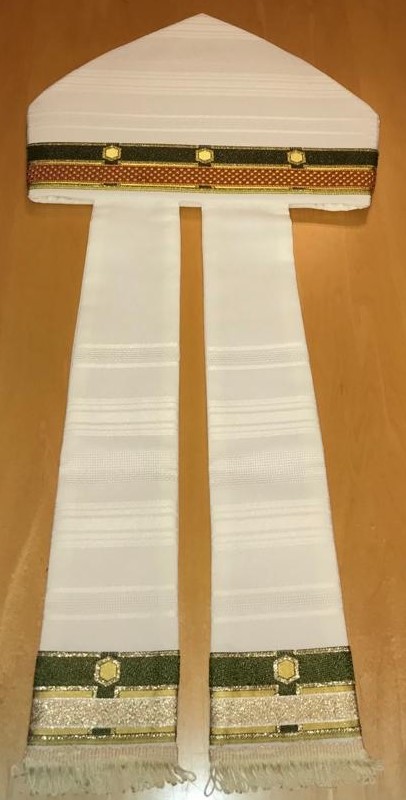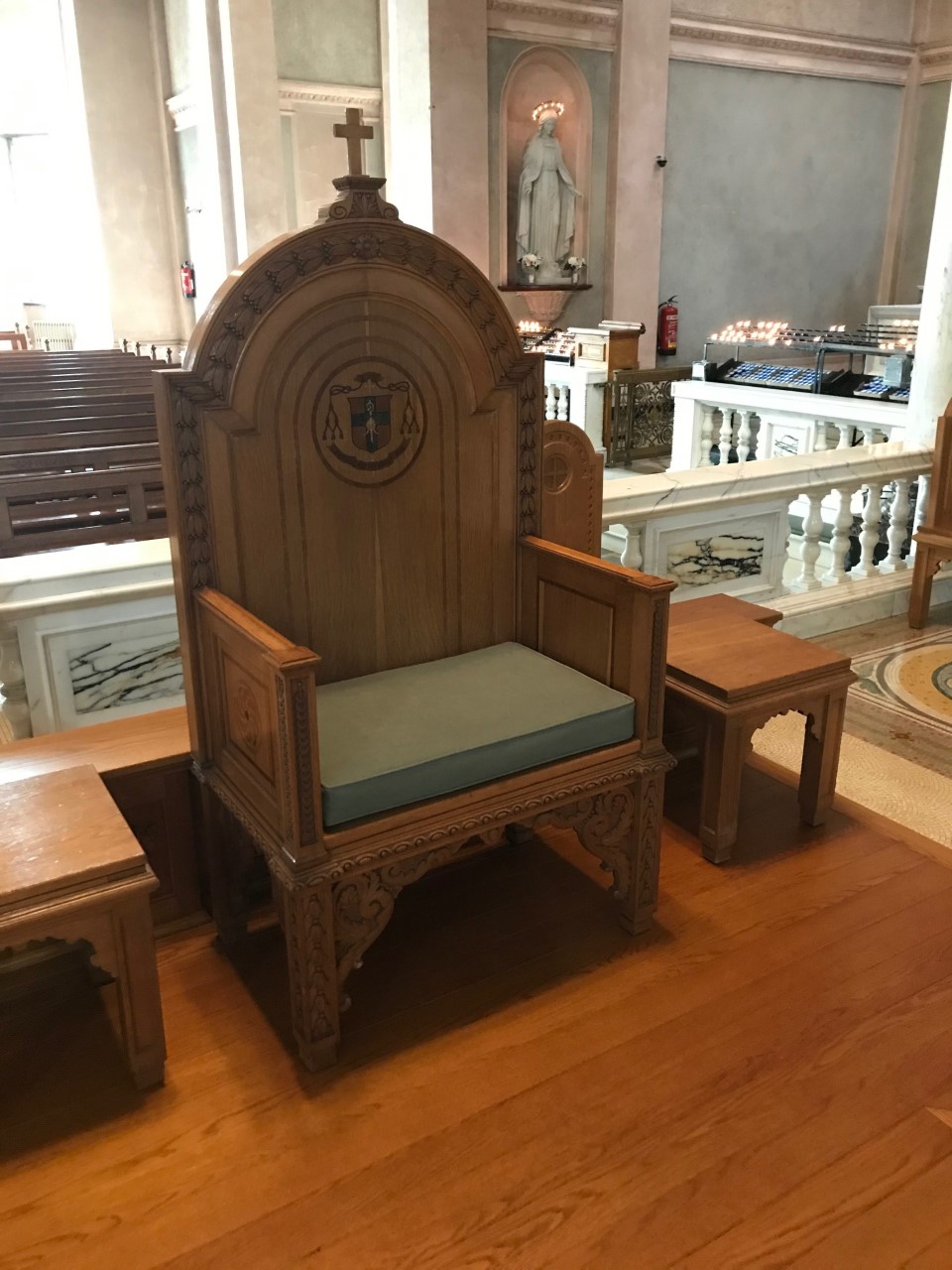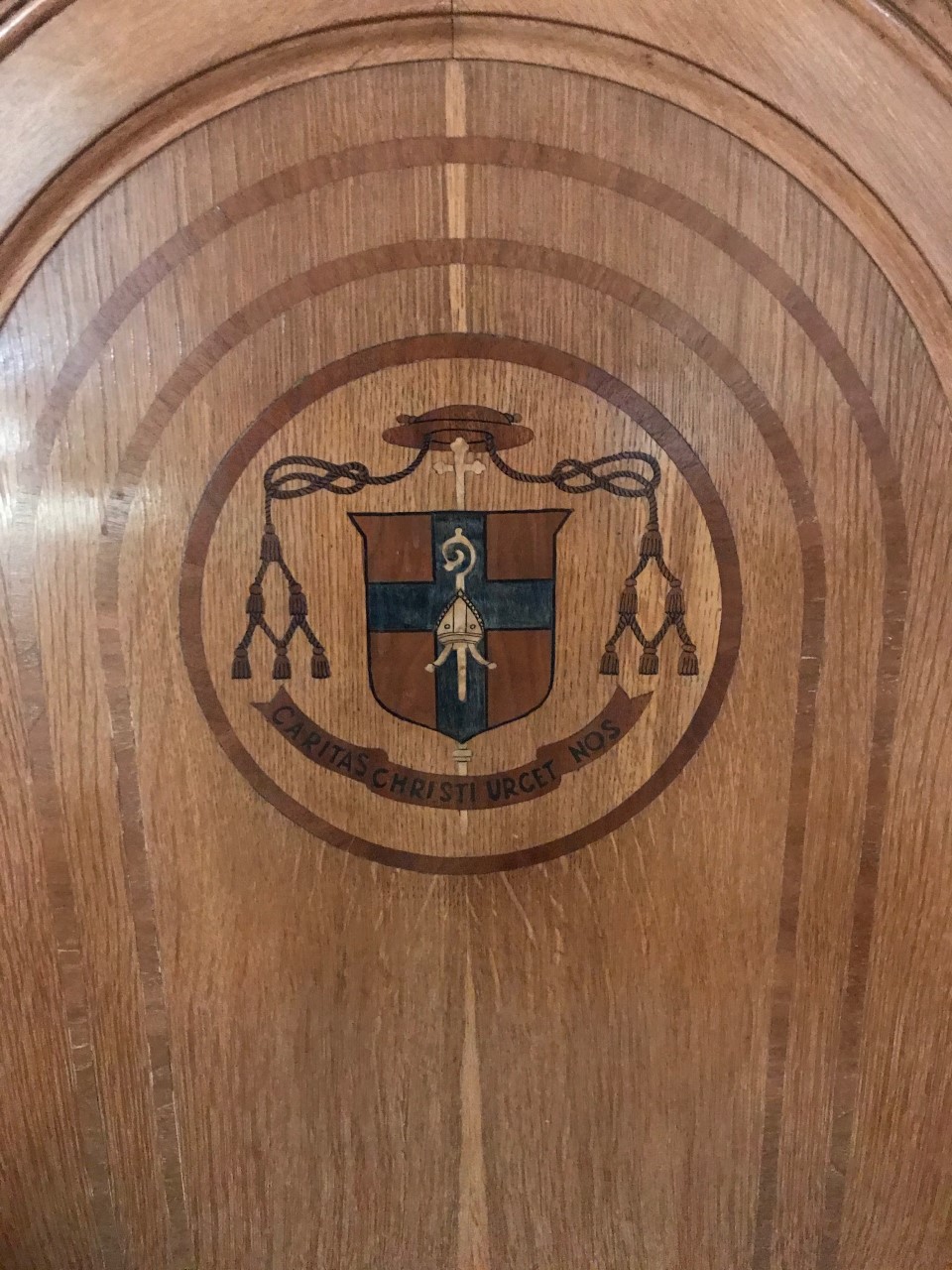The Symbols of Bishop Hayes’ Ministry
During the ordination ceremony, Bishop Hayes will receive a ring, a mitre and a crozier as symbols of the authority and office vested in him as Bishop of Kilmore before being seated in the ‘cathedra’, which is his formal seat in the Cathedral
THE RING
The ring represents his nuptial bond with the Church while the crozier or pastoral staff illustrates his pastoral ministry as ‘shepherd of the flock’.
Bishop Martin’s ring recognises the marriage of his parents, Daniel and Mary Agnes, as it is made from the ring worn by his mother.

THE MITRE
The mitre is placed on his head and signifies the Church’s commission to pursue holiness. Bishop Martin’s mitre was made by Sr Gabrielle in the Poor Clare Monastery, Ennis, Co. Clare. The design is based on Bishop Martin’s priestly ordination vestments which were made by Sr Nellie Ryan, R.S.M., Cashel in 1989.

THE CROZIER
The crozier illustrates the ministry of bishop as a ‘shepherd of the flock’
Bishop Martin’s crozier or pastoral staff is made of different woods, each of which has particular significance for him. He has commissioned, Joey Burns, of Irish Wood Sculpture in Cavan to construct the pastoral staff consisting of four different timbers:- bog oak from the native parish of his mother, Mary Agnes (nee Bowe), Rathdowney-Errill in the Diocese of Ossory; ash from his own birthplace in Borris, Two-Mile-Borris, Thurles, Co. Tipperary; sycamore from a tree planted by Bishop William Bedell in 1632 which still stands at Kilmore beside where the pre-Reformation Catholic cathedral of St Feidhlimidh was located and adjacent to the present-day Church of Ireland St Feidhlimidh’s Cathedral. The pastoral staff is engraved with Celtic Christian symbols and features inserts of yew from the lands of St Oliver Plunkett in Loughcrew, Oldcastle, Co. Meath.

THE BISHOP’S CHAIR (Cathedra)
The cathedra is the seat of a bishop in the principal church of a diocese, usually a cathedral.
It is a symbol of the bishop’s teaching authority.
Pope Benedict XVI explained the symbolism in a homily given on the feast of the Chair of St. Peter in 2006:
The “Cathedra” literally means the established seat of the Bishop, placed in the mother church of a diocese which for this reason is known as a “cathedral”; it is the symbol of the Bishop’s authority and in particular, of his “magisterium,” that is, the evangelical teaching which, as a successor of the Apostles, he is called to safeguard and to transmit to the Christian Community.
When a Bishop takes possession of the particular Church that has been entrusted to him, wearing his miter and holding the pastoral staff, he sits on the cathedra. From this seat, as teacher and pastor, he will guide the journey of the faithful in faith, hope and charity.
The chair reminds the bishop of his duties to his flock, and its size (since it is usually larger than other sanctuary furnishings) denotes the immense weight that is placed on his shoulders as chief shepherd of the local area. It’s a special honour, one that comes with great responsibility.






